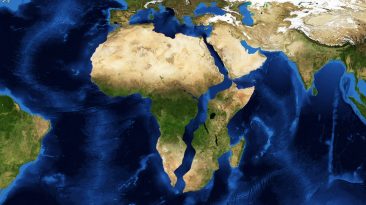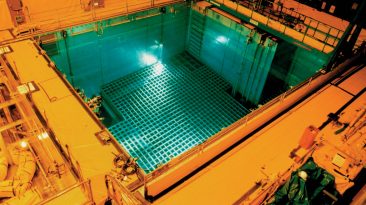Congratulations, you’ve taken the seven-month-long journey and have landed on Mars. And it turns out, you’re the first person. Better start getting the human colonization prepared.
Will you ever make it back to Earth? How will you gather resources for survival? And will this happen one day?
A trip to Mars might happen much sooner than you think. NASA is hoping for it to be as soon as 2033.
Think about that. The first person on Mars might be watching this video right now. Hello, future Martian!
And NASA may not be the first to get there. There are plenty of other space companies trying to get to Mars around the same time. Similar to what we saw in the 1960s with the Moon, it’s very likely we’ll see another space race, only to Mars this time.
But getting there is the boring part, now that you’ve landed, what happens next?
Your first goal will be to set up base. And it can’t just be anywhere. Researchers believe the best place for a camp on Mars is near the planet’s poles.
There you’ll find massive ice deposits which are thought to contain large amounts of water. We need water to survive, but it’s heavy and takes a lot of room on a spacecraft. To solve this problem, we could potentially turn this ice into water that we could drink, study, and use.
Scientists suspect that the ice deposits may also contain iron and sulfur, which could be used for manufacturing in the future. But that’s in the long term.
For now, let’s worry about your base being built. Luckily you won’t be building it as space companies intend to send a team of robots up there to assemble the base for you.
After that’s done, you can finally move in. The base will be roughly 12 meters high (41 ft.) and 5 meters in diameter (16 ft.).
That may sound pretty roomy, but you won’t be alone. Space companies are planning to send six people to Mars for the first expedition.
At least you’ll have people to talk to while you’re there. Once you’ve landed you’ll quickly notice how different Mars feels from Earth. Mars has just one third the gravity that the Earth has.
NASA says that a person who weighs 45 kg 100 pounds on Earth would only weigh about 17 kg 37 pounds on Mars. You’ll be able to jump all around the planet, but if that’s all you expect to do, this trip won’t be for you.
The first people on Mars will be unlike any astronauts we’ve seen before. Apart from knowing everything about physics and space ships, they’ll also have to be farmers, botanists, and excellent problem solvers.
A massive problem they’ll all need to solve? Food prodction.
Let’s hope you like your vegetables because aside from astronaut food that’s pretty much all you’ll be eating. A University in the Netherlands simulated crop growing on Mars and found out that potatoes, peas, carrots, and radishes could all grow on the planet.
You’ll be able to use the soil from Mars and water will come from recycling urine and whatever other water products were brought onto the planet. And speaking of human waste, unfortunately, you’ll have to use your poop to fertilize the crops you’re growing. Now that’s recycling!
After about nine months of researching, farming, and exploring Mars, you’ll then begin your journey home. This is arguably the hardest part of the trip. You and your crewmates would hop into this Mars Ascent Vehicle or MAV for short.
Then you need to line it up–perfectly–with the larger space ship, which is orbiting Mars. The ascent up to your space ship could last as little as under half an hour or several days.
It all depends on if you can line up the MAV with the larger space ship. And if not done correctly, things could go very, very bad.
But if all goes according to plan, think of what you’ve just done! You were the first person on Mars.
And after living there for months, what you’ve learned will make it easier for future generations to live on the red planet. Permanently!
Subscribe to What-If on Youtube or follow the show on Facebook Watch.
Sources
- “Ep 53: Mars Is Hard. Here’s Why.”. 2019. NASA. Accessed June 18 2019.
- “Experiments Find Potato That Could Grow On Mars – The Versed”. Bovey, LG. 2018. The Versed. Accessed June 18 2019.
- “Open For Discussion: Surviving On Mars – American Chemical Society”. Candanosa, Roberto, 2017. American Chemical Society. Accessed June 18 2019.
- “If We Successfully Land On Mars, Could We Live There?”. 2019. astronomy.com. Accessed June 18 2019.
- “NASA Selects Six Companies To Develop Habitat Prototypes, Concepts”. 2019. NASA. Accessed June 18 2019.
- “Nine Real NASA Technologies In ‘The Martian'”. 2019. NASA. Accessed June 18 2019.



























